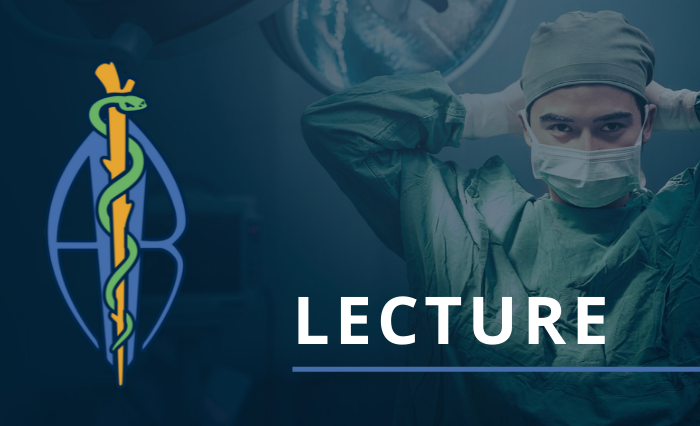Unbreak My Heart – The Reality of the Future? Regenerative Cardiovascular Research with Focus on Minipig Model

Date: Wednesday, October 11, 2023
Time: 10:00 am CTDuration: 30 MinutesRoom: Cumberland Ballroom, Salon ABCD
Speaker – Nina Krutrök
AstraZeneca
After myocardial infarction (MI) patients lose up to 1 billion cardiomyocytes. The inability of the injured mammalian heart to regenerate the loss of contractile myocardial tissue leads to ischemic heart failure (HF). Despite major advances in the treatment of HF, the root cause of impairment is still unaddressed. Human Ventricular Progenitor cells (HVPs) engraft, differentiate into cardiomyocytes, and prevent disease progression after -MI-in the murine and porcine heart.1, 2 In our research we aim to study the effect of HVPs as a new modality in a post-MI pig model.
Methods:
Myocardial infarction was induced using the balloon technique. A catheter-introducer was placed in the right carotid artery, a guide was advanced to the aortic arch. By means of fluoroscopic guidance and injection of contrast agent the coronary vessels were visualized to enable positioning of a wire in the left anterior descending artery (LAD). A balloon catheter was advanced over the wire and positioned distal to the second diagonal branch of the LAD. The balloon was inflated for 120 min. A loop recorder for recording of ECG was implanted subcutaneously on the side of the chest. One week after MI the animals were started on an immunosuppression regime to avoid cell rejection.
Results:
Methods continue: Two weeks after MI surgery a thorocotomy in the 4th/5th intercostal space was performed and the cells were injected from the epicardium. Anesthesia was induced with a mixture of Zoletil 25 mg/ml and Dexmeditomidin 0.5 mg/ml at a volume of 0.04 ml/kg im. The pig was connected to a ventilator and anesthesia maintained with Isoflurane with Air and O2 as carrier gas. MI analgesics; Lidocain 20 mg/ml locally in neck, Buprenorfin 0,3 mg/ml (0.045 mg/kg X 2). Additional analgesics at thoracotomy; Fentanyl patch 75 mcg/h (1 patch, switched every 48h for 7-8 days), was applied the day before surgery. Bupivakain adrenalin 5 mg/ml, 20 ml were injected locally in the skin and muscle layers in chest-wound.
Conclusion:
Method continue: Two months after cell injection, heart function was evaluated by echocardiography and Pressure-Volume loop.
Results: The survival of the pigs two months after cell injection was 85% in this model. Two months after HVP cells injection we observed engraftment of the HVP cells and the preservation of cardiac function was improved compared to vehicle controls.
Conclusion: The use of the minipig MI model enable us to understand the potential of HVP cells to engraft and preserve heart function after MI.
Additional Authors: S. Pehrsson, A.C. Nordkam, P. Rodrigues, E. Kvarnström, M. Antonsson
This is an archived event. Please log in with your member account to access these resources.
Similar Events Happening
Morning Wet Lab – Vanderbilt University
Time: 8:00 am
Basic swine laparoscopy and endovascular interventions paired with an introduction to stereotaxic, intrathecal surgery, and vascular catheterization in the rat
Afternoon Wet Lab – Vanderbilt University
Time: 12:00 pm
Intermediate swine procedures and rat microsurgery and catheterization techniques
Automated Blood Sampling in a Telemetry Cardiovascular Dog Colony
Time: 10:30 am
Speaker – Amanda Wilsey Abbvie Implementation of Automated Blood Sampling (ABS) allows for uninterrupted cardiovascular data collection with simultaneous blood collection throughout a telemetry dog preclinical study. This reduction shortens study timelines, minimizes CV data artifacts, and considerably reduces compound synthesis and the associated costs. Methods: A colony of telemetry instrumented male beagle dogs were implanted and maintained in-house for non-GLP preclinical cardiovascular safety studies. Evaluation of the ABS telemetry dog cardiovascular model; highlighting the benefits and downfalls of the last seven years since implementing Automated Blood Sampling. Results: Since 2016, telemetry dogs implanted with transmitters and vascular access ports [...]
Evaluation of an African Green Monkey Model of Transient Ischemia
Time: 11:00 am
Speaker – Kimicia Isaac, St. Kitts Biomedical Research Foundation / Virscio, Inc. The NIH estimates 800,000 Americans suffer strokes yearly, with significant mortality, long-term disability, and substantial unmet medical need. The lack of translation from small animal models to clinical efficacy has slowed therapeutic development. Nonhuman primates (NHP) share anatomy and physiology with humans important to the clinical pathophysiology of stroke and truly predictive preclinical modeling. An model of transient ischemia is described in adult male African green monkeys (Chlorocebus sabaeus) that promises to enable more robust evaluation of stroke therapeutics. Methods: 11 monkeys received a 180 min occlusion of [...]
Practical Approach to Pain Management for Nonhuman Primates: Enhancing Welfare and Research Outcomes
Time: 1:00 pm
Speaker – Jan Bernal Amgen Pain management is a critical component of responsible animal research and care, particularly in the context of nonhuman primates (NHPs) utilized in biomedical and behavioral studies. This presentation aims to provide a comprehensive overview of practical pain management strategies for NHPs, with a focus on enhancing their welfare while optimizing research outcomes. The presentation will begin by defining pain and classifications of pain. It will emphasize the pain pathways and the multimodal approaches effective at each of the pain pathways, encompassing a wide range of medication and procedural options to modulate pain. Attendees will gain [...]
The Vital Role of Capnography in Surgical Research: Enhancing Patient Care and Surgical Outcomes
Time: 1:30 pm
Speakers: Jan Bernal Amgen Amy Martunas Vertex Capnography has emerged as an indispensable tool in veterinary medicine, revolutionizing the way we monitor and manage patients during various surgical scenarios. This presentation is dedicated to shedding light on the fundamental principles, practical applications, and clinical benefits of capnography in veterinary practice. The presentation will commence by introducing the basic principles of capnography, elucidating the physiological underpinnings of carbon dioxide (CO2) measurement, and its significance in assessing both ventilatory and circulatory aspects of patient health. Attendees will gain insights into the mechanics of capnography, including the technology behind mainstream and side stream [...]



